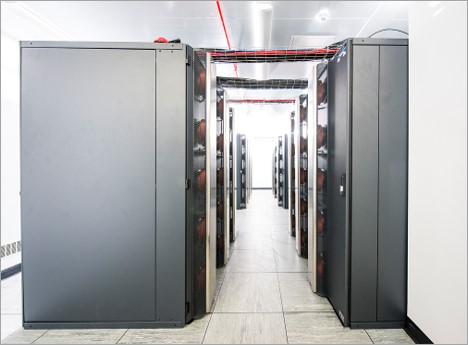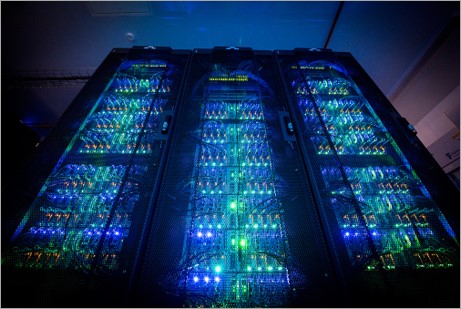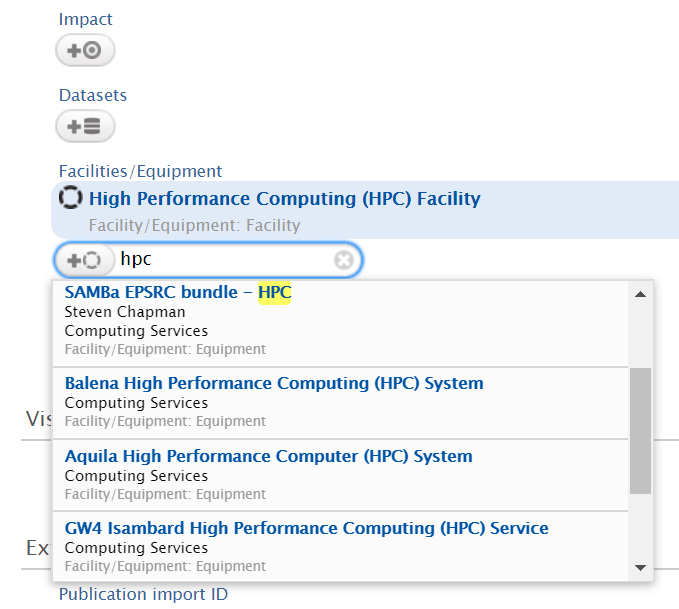Introduction¶
What is HPC and why is it different to using your desktop?¶
“High Performance Computing most generally refers to the practice of aggregating computing power in a way that delivers much higher performance than one could get out of a typical desktop computer or workstation in order to solve large problems in science, engineering, or business.” - insideHPC
- Aggregated computing power
- Very large problem sizes
- Faster time to solutions for applications that scale
- Multiple problems simultaneously
Balena sits in a room with other computingresources in cabinets:

It has mood lighting to make it look pretty for marketing shots:

Connecting all the computing resources together takes a lot of special cables:

And can be quite pleasing to the eye:

Advancing Research Compute (ARC) team¶
ARC run and support the HPC service at Bath:
| Steven Chapman | ARC Manager |
| Roshan Mathew | HPC System Developer |
| James Grant | Research Software Engineer |
| Stefano Angioni | Cloud Solutions Developer |
We provide a range of support and consultancy services including to help users of all skill levels:
- installing and supporting software applications
- assistance with creating job scripts, workflow and troubleshooting issues
- optimising software performance and streamline data handling and analysis process
- guidance and support in meeting current and future research challenges
- advice on including HPC and software development costs on research proposals
- migrate to the Balena/Isambard HPC systems
- software development consultancy
- training course
- Research Software Skills
- Course list
- Introduction to Linux
- Introdution to HPC
- Programming
- Version control
- Testing
- Working with data and plotting
